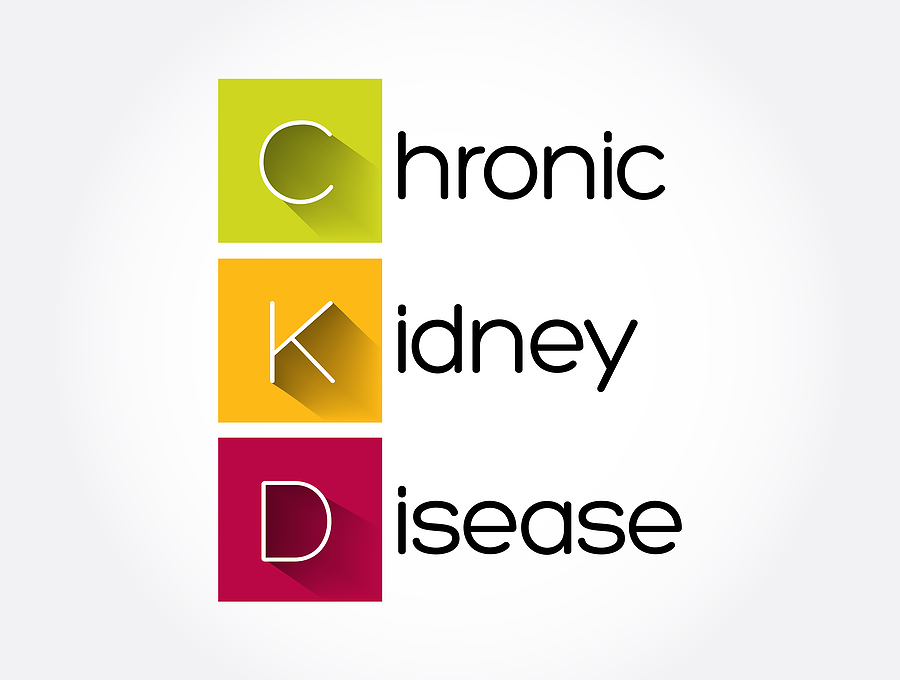If this title caught your attention, there is a good chance you have some concerns related to your FAA medical certificate. Fear not. The following list is not meant to make the medical exam seem mysterious or difficult. Rather, I hope that by understanding some of the most common missteps pilots make with their AMEs, you will be better able to avoid them yourself.
You should take your FAA flight physical seriously, exercise some due diligence, and show up to your appointment with your Aviation Medical Examiner (AME) knowing what to expect. The likelihood is you will get your medical certificate without much difficulty. In 2018, the FAA reported that there were 540,725 airmen with active medical certificates[1]. Of those 30,754 required a special issuance. Put another way, if you are a pilot with an active medical certificate, there is a 94.3% chance your visit to the AME went smoothly. Less than 6% of pilots are flying under the provisions of a special issuance.
In case you are wondering, of those 540,725, about 28% were 1st class, 15% were 2nd class, and 57% were 3rd class. There are also about 55,000 pilots flying under the provisions of Basic Med, but that is a discussion for another time [2].
Nothing I could write can completely remove the anxiety of visiting your AME, but if you can avoid or minimize the effects of the following 10 things, your chances of coming home with your medical certificate in hand will be much higher. Here goes:
10. Have a disqualifying condition. Okay – this might seem a bit obvious but notice that it is number 10 on the list. 14 CFR Part 67 lists 15 diagnoses that are specifically listed as disqualifying medical conditions:
· Cardiac valve replacement
· Coronary heart disease that has been treated or, if untreated, that has been symptomatic or clinically significant
· Diabetes mellitus requiring hypoglycemic medications
· Disturbance of consciousness without satisfactory explanation of the cause
· Epilepsy
· Heart replacement
· Myocardial infarction
· Permanent cardiac pacemaker
· Personality disorder that is severe enough to have repeatedly manifested itself by overt acts
· Psychosis
· Substance abuse
· Substance dependence
· Transient loss of control of nervous system function(s) without satisfactory explanation of the cause.
Bipolar disease, personality disorders, psychosis, and unexplained seizures or changes in nervous system control are the only conditions that don’t provide much wiggle room. I wholeheartedly agree with the FAA on that point.
With that said, really consider this list. You can get a 3rd class certificate after a heart transplant. There are now a handful of commercial pilots with insulin-dependent diabetes [3]–[5]. Even heart attack, cardiac pacemakers, and DUI arrests don’t necessarily end a flying career. You will need to send a significant amount of information to the FAA to demonstrate you are still safe to fly and the process can take a few months, but after the first time, you submit a special issuance request, the process of recertification gets much easier.
There are also 24 so-called Conditions AMEs Can Issue or CACIs (pronounced khakis)[6] and the list has been growing consistently since the FAA began the program. These include:
· Asthma
· C-ITP (Chronic Immune Thrombocytopenia)
· Chronic Kidney Disease
· Colitis
· Chronic Lymphocytic Leukemia (CLL)/Small Lymphocytic Lymphoma (SLL)
· Essential Tremor
· Glaucoma
· Hepatitis C – Chronic
· Migraine and Chronic Headache
· Mitral Valve Repair
· Polycystic Ovarian Syndrome (PCOS)
· Pre-Diabetes
· Primary Hemochromatosis
· Weight Loss Management
If you have one of these conditions AND you coordinate before your appointment AND you bring the right documentation, your AME can still issue your certificate on the same day as your exam without waiting for approval from the FAA.
I hope the conclusion you draw from this section is something I have written several times before: if you think you are safe to fly, you are probably correct. Getting the paperwork right will make all the difference in how long it takes to get your certificate.
9. Take a disqualifying medication. The FAA’s policies on medication use have become more liberal in many ways along with the number of underlying conditions it is willing to consider. For a general idea of which medications are allowable during flight, you can explore this interactive search tool. Unfortunately, the FAA does not publish a master list of all allowable medications, but if you dig deep enough through the various CACI and AASI protocols along with other resources on the FAA’s website and spend a few years submitting special issuance requests, you can get a pretty good idea of its current policy.
Here is the summary: The FAA will approve most first and second-line treatments for most common medical conditions. That applies to medications for high blood pressure, diabetes, high cholesterol, allergies, and asthma to name a few. You still need to advise the FAA via your AME before flying on any new medication, but the chances that you will be able to keep your certificate with the medications your treating physicians prescribe for you is pretty good.
The most important takeaway here is that you should NOT forgo treating a medical condition because you think the FAA won’t like the medication you are using. Chances are much higher that you could be disqualified based on complications from the condition you are not treating.
8. Ignore your treating doctor’s medical advice. If you have any significant medical diagnosis, the FAA is probably going to want some information about how it was diagnosed and how it is being treated. That information will most likely be provided in the form of a letter or medical records provided by your treating physician. As I have discussed above, the FAA is pretty accepting of pilots with medical issues as long as those issues are managed. Knowing about a medical condition and ignoring the medical advice from your treating physician is a great way to erode your credibility with your AME and the Aerospace Medical Certification Division (AMCD) at the FAA. You might be able to get away with some issues, but it will catch up to you eventually.
7. Get arrested for DUI or other drug and alcohol-related charges. Don’t drive drunk and don’t use drugs. If you were young and stupid once, the FAA provides an allowance for that. If the event happened more than five years before the day of your exam AND your Blood Alcohol Level (BAC) was less than 0.15, the AME has some discretion about whether or not to issue your certificate. Don’t drop this bombshell on the day of your exam without discussing it ahead of time. There is paperwork and consideration that goes along with this and you should do everything you can to put your AME in a good mood while he/she is doing that consideration. If your BAC was above 0.15, you refused a breathalyzer or your BAC was not recorded for some other reason, get ready for a longer process. If you have two or more drug or alcohol incidents in your lifetime, your burden of proof goes up even further.
No matter what situation you are in, one of the best things you can do to protect your prospects of flying is DO NOT commit any more drug or alcohol offenses.
6. Lying. Nothing will trigger a referral faster than lying to your AME. For your AME, it is hard enough trying to get through a day in the office. FAA exams tend to have more administrative tasks attached to them than typical appointments, not to mention that most AMEs take their role to keep the airspace system safe quite seriously. If one conflicting piece of information comes up during your exam, you will probably get the benefit of the doubt. Mental alarm bells probably start going off inside your AME’s head the second time. When you get to number three, you are probably done. There is too much at stake and your AME probably won’t take the time to sort out if you are a liar or a really poor communicator. Keep it simple. Make sure you know what information you will need before your appointment. Whatever you do, stick to the truth and don’t lie.
5. Failing to comply with a special issuance or AASI. A special issuance is called special because it is. Unlike all the other airmen who still must comply with 14 CFR part 67 for their standard issuance, when you have a special issuance medical certificate, the FAA takes the time and effort to uniquely consider your situation and spell out a set of instructions just for you. They deliver that information to you in the form of a letter that usually specifies something to the effect that your medical condition needs to remain stable and you have to bring this or that lab result, radiology study, or doctor’s statement to your next FAA flight physical. Sometimes you will be required to visit your AME more frequently than a pilot on a standard issuance. These instructions can get pretty involved – the one for diabetes is particularly arduous.
AASI stands for AME-Assisted Special Issuance. The difference between a plain special issuance and an AASI, is that the FAA will include instructions to your AME in the AASI that will allow him/her to issue you a certificate on the day of your exam provided you meet all the conditions.
If you are on a special issuance, do EVERYTHING the FAA spells out in their letter. Timing, record completeness, and even specific phrasing from your doctors can all be important. Unless you have been doing it for a few years, it is probably a good idea to consult with us or your AME before your appointment. No matter what, you need to get it right to avoid unnecessary certification delays.
4. Not bringing the information you need for a CACI. CACIs cover a wide range of conditions these days and AMEs have more freedom to issue your certificate on the day of your exam than ever. There is one catch: you need to get the right information together ahead of time, coordinate with your AME and arrive at your appointment with everything organized and ready to go in order to pull it off. It is not incredibly difficult, but if you don’t have everything together, your AME still has to submit your exam within two weeks of your appointment. This is a situation where a little planning goes a long way. It is likely worth your time and effort to review your paperwork with someone who knows what they are doing before the AME appointment.
3. Showing up unprepared. You should arrive at your FAA flight physical with your medical records well organized, able to discuss each of your conditions and what you are doing to manage them with copies of everything you have received from AMCD. You should really know what is required of you as well as the AME so you can support each other in the process. If you don’t feel like that describes you, you need to change that before your appointment. You also need to make sure your AME is up to the task. Many AMEs focus on simple exams or just have not seen many CACIs, AASIs, or special issuances. You don’t want to be a test case with your flying career on the line. There are roughly 3000 AMEs designated to perform FAA physicals. Less than 300 of those specialize in aerospace medicine[1] and – not for nothing – three of those are on our staff. If you can’t find an AME in your area that inspires you with confidence, we can help. Your flight physical is not a place for surprises.
2. Showing up to your appointment sick or injured. This legitimately deserves its number two ranking, but the comedic value associated with some of the stories I could tell would earn it an honorable mention even if that were not true. Understand this: your AME evaluates you on the day and time of your physical. It does not matter how healthy you were in high school or college or the week before the exam and it does not matter how fit you will be tomorrow or after the New Year. If you show up to your FAA medical exam with a 102-degree fever, on crutches, limping, with a patch over one eye, complaining of migraine or – my favorite ever – asking about what your new chest pain might be, you are not going home with a certificate, plain and simple. Use some common sense. Rescheduling your appointment might cost you a few days. Showing up to your exam sick or injured could cost a few months.
1. Forgetting your glasses or hearing aids. It is the simple things that get you. Plan for your physical like you are planning for a flight. Think about it at least a day ahead of time and make a checklist for the things you need to bring. If you are used to wearing hearing aids, make sure you bring them. If you wear corrective lenses for everyday use, make sure you have those too. What I have just described is a good general approach to your exam, but it is not what gets people. What makes this item number one is reading glasses. There are tens of thousands of pilots out there that need reading glasses for a near vision yet refuse to put a pair in their flight bag or somehow neglect to bring a set to their physical appointment. Without even a close second, the top reason I have been unable to issue someone an FAA medical certificate on the day of the exam has been reading glasses.
Hopefully, this post helps to put your next FAA flight physical in perspective. With a bit of preparation and steering clear of some obvious pitfalls, it is relatively unlikely that you will find yourself at odds with your AME or the FAA when it comes to your medical certification. If you still have concerns or you would like to discuss your case for any reason, we are more than happy to help.
References:
[1] V. J. Skaggs and A. I. Norris, “2018 Aerospace Medical Certification Statistical Handbook,” Washington DC, 2021. [Online]. Available: http://www.faa.gov/go/oamtechreports.
[2] U. Department of Transportation and O. of Inspector General, “FAA Issued New Medical Requirements for Small Aircraft Pilots but Lacks Procedures and Data To Oversee the Program FAA Issued New Medical Requirements for Small Aircraft Pilots but Lacks Procedures and Data To Oversee the Program What We Looked At,” 2020. [Online]. Available: www.oig.dot.gov.
[3] “Celebrating the First Commercial Pilot with Type 1 Diabetes.” https://beyondtype1.org/commercial-pilot-diabetes/ (accessed Apr. 09, 2021).
[4] “Pilots with Diabetes | ADA.” https://www.diabetes.org/resources/know-your-rights/discrimination/employment-discrimination/pilots-with-diabetes (accessed Apr. 09, 2021).
[5] “Guide for Aviation Medical Examiners.” https://www.faa.gov/about/office_org/headquarters_offices/avs/offices/aam/ame/guide/dec_cons/disease_prot/itdm/ (accessed Apr. 09, 2021).
[6] “Guide for Aviation Medical Examiners.” https://www.faa.gov/about/office_org/headquarters_offices/avs/offices/aam/ame/guide/certification_ws/ (accessed Apr. 29, 2021).





